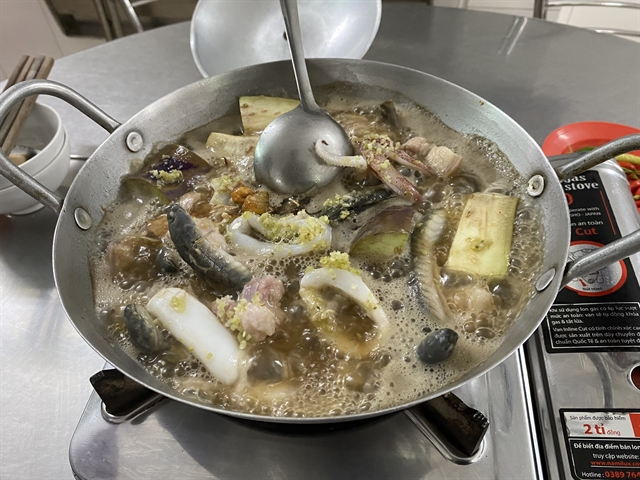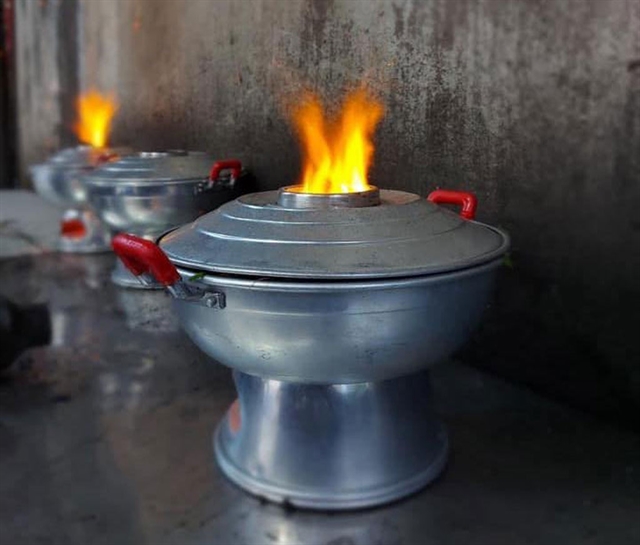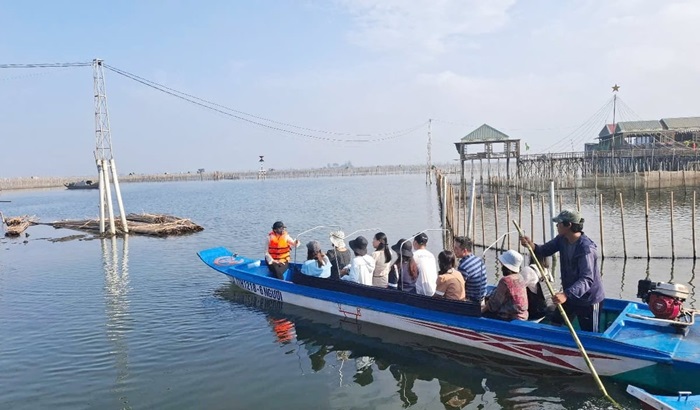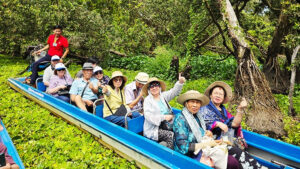Lau Mam (fermented fish hotpot) originated from the Chau Doc City in the An Giang Province as a dish for poor people and it, along with Mam Ca (fermented fish paste), has become characteristic of culinary culture of Viet Nam's southern region.

The unique flavor of fermented fish hotpot comes from the combination of all the ingredients with uminal flavor broth. — VNS Photo Hong Linh

There are more than 10 vegetables served with the hotpot. When served with hot pot, each vegetable not only imparts a distinct flavor but also provides numerous health benefits. — Photo phunuonline.com.vn
Islet pot, a feature of the culinary culture of southern Vietnam. — Photo thannien.vn
In the past, thanks to the abundance of fish, locals came up with a way to make use of the excess fish they caught: fermented fish paste.
Fermented fish paste is made by putting fresh fish and salt in a certain proportion into a jar. Then the jar is tightly closed and stored in a cool, dry place for 30 days. After 30 days, the fish inside will be broken down by the natural fermentation process, reaching the consistency of a paste, but still somewhat maintain its fish figure.
Fermented fish hotpot broth is made by boiling a mixture of water and fermented fish paste, with a wide variety of spices added to reduce the paste’s strong taste. In some provinces, people also add coconut water in the mix.
The soul of the hot pot broth comes from the fermented fish paste used to make it. Based on the traditional conception of southerners, the most suitable kinds of fish to make the paste are choke and Siamese mud carp.
The standard for the broth is a beautiful fawn colour and sweet aroma.
Many kinds of fresh southern Vietnamese fish can be used to cook the hot pot, especially snakehead, pangasius conchophilus, and basa.
Ten types of vegetables are served in the hot pot, each of them bringing a unique flavour.
One of the irreplaceable ingredients of the hotpot is eggplant, because it helps reduce the strong characteristic aroma of fermented fish when simmered with broth. Its taste is tender, mild, and sweet.
The other must-have vegetable for the hotpot is lowgrass, a specialty vegetable in southern Viet Nam which brings a slight bitterness to the dish. This vegetable can be used to make a wide variety of southern dishes, and is associated with southern life and poetry.
In addition, two types of flowers are indispensable when served with the dish: water lily and common sesban. Those two flowers are also a feature of southern food culture, and they bring sweetness to the dish.
It is said that the hotpot is the culinary quintessence of the southern Vietnamese people, carrying with it the richness of all the flavours across the South.
In some restaurants in HCM City, lau mam is served with seafood, beef, and even eel.
The hotpot is a favourite for friends and family meetings, and it can be enjoyed at any time of the year.
According to Nhat Nguyen Diem My, owner of Cu Lao fermented fish hotpot restaurant in HCM City, the hotpot is mostly served at weddings in southwest Viet Nam.
"One of the special things is that the hotspot will be put in a specially designed aluminum pot called islet hot pot, which has a hollow tube in the middle. Hot coal is placed inside the tube to cook the broth around it," she said.
A piping hot lau mam, with the rich seafood broth, evokes the image of an islet, hence the namesake. Waiters do not even need to bring out a mini gas stove to customers’ tables, since the coal will keep the dish hot and steamy for a long time.
"In this way, diners can feel like they were back in the 90s, when this type of hot pot bowl was commonly used," she added.
Hai Yen, a university student who is a fan of Vietnamese traditional food, said that the fermented fish hotpot has umami flavours and even those who can't eat fermented fish paste can still enjoy it.
It costs about VND175,000 to VND340,000 (US$14.52) to enjoy this fantastic dish.
By Hong Linh














